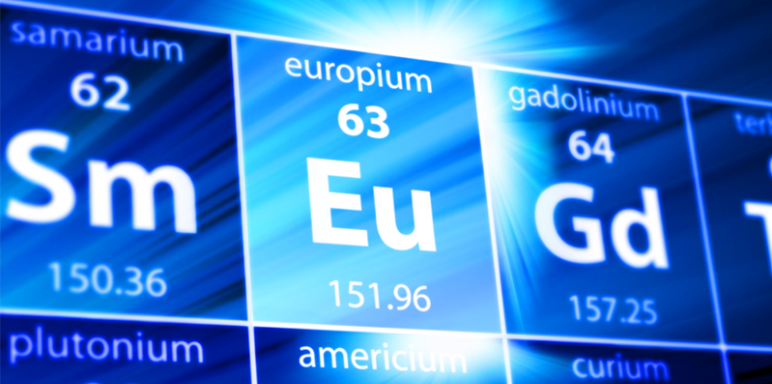Quantum information technology is a new information technology based on quantum mechanics, which encodes, computes and transmits the physical information contained in quantum system. The development and application of quantum information technology will bring us into the “quantum age”, and realize higher work efficiency, more secure communication methods and more convenient and green lifestyle.
The efficiency of communication between quantum systems depends on their ability to interact with light. However, it is very difficult to find a material that can take full advantage of the quantum properties of optical.
Recently, a research team at the Institute of Chemistry in Paris and the Karlsruhe Institute of Technology together demonstrated the potential of a molecular crystal based on rare earth europium ions (Eu³ +) for applications in quantum systems of optical. They found that the ultra-narrow linewidth emission of this Eu³ + molecular crystal enables efficient interaction with light and has important value in quantum communication and quantum computing.

Figure 1: Quantum communication based on rare earth europium molecular crystals
Quantum states can be superimposed, so quantum information can be superimposed. A single qubit can simultaneously represent a variety of different states between 0 and 1, allowing data to be processed in parallel in batches. As a result, the computing power of quantum computers will increase exponentially compared to traditional digital computers. However, in order to perform computational operations, the superposition of qubits must be able to persist steadily for a period of time. In quantum mechanics, this period of stability is known as the coherence lifetime. The nuclear spins of complex molecules can achieve superposition states with long dry lifetimes because the influence of environment on nuclear spins is effectively shielded.
Rare earth ions and molecular crystals are two systems that have been used in quantum technology. Rare earth ions have excellent optical and spin properties, but they are difficult to be integrated in optical devices. Molecular crystals are easier to integrate, but it is difficult to establish a reliable connection between spin and light because the emission bands are too wide.
The rare earth molecular crystals developed in this work neatly combine the advantages of both in that, under laser excitation, Eu³ + can emit photons carrying information about nuclear spin. Through specific laser experiments, an efficient optical/nuclear spin interface can be generated. On this basis, the researchers further realized nuclear spin level addressing, coherent storage of photons, and the execution of the first quantum operation.
For efficient quantum computing, multiple entangled qubits are usually required. The researchers demonstrated that Eu³ + in the above molecular crystals can achieve quantum entanglement through stray electric field coupling, thus enabling quantum information processing. Because the molecular crystals contain multiple rare earth ions, relatively high qubit densities can be achieved.
Another requirement for quantum computing is the addressability of individual qubits. The optical addressing technique in this work can improve the reading speed and prevent the interference of the circuit signal. Compared to previous studies, the optical coherence of Eu³ + molecular crystals reported in this work is improved by about a thousand-fold, so that the nuclear spin states can be optically manipulated in a specific way.
Optical signals are also suitable for long-distance quantum information distribution to connect quantum computers for remote quantum communication. Further consideration could be given to the integration of new Eu³ + molecular crystals into the photonic structure to enhance the luminous signal. This work uses rare earth molecules as the basis for quantum Internet, and takes an important step toward future quantum communication architectures.
Post time: Jan-02-2024





